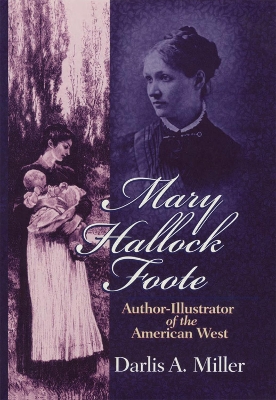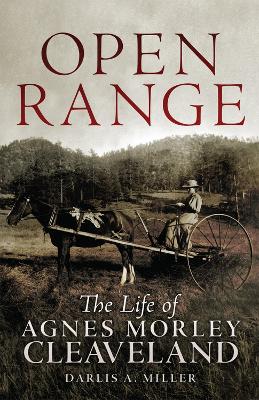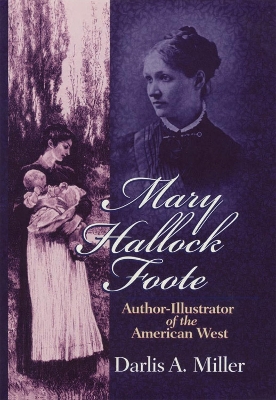The Oklahoma Western Biographies
4 total works
Foote's images of the American West differed sharply from those offered by male artists and writers of the time. She depicted a more gentle West, a domestic West of families and settlements rather than a Wild West of soldiers, American Indians, and cowboys. Miller examines how Foote's career was molded by the East-West tensions she experienced throughout her adult life and by society's expectations of womanhood and motherhood.
This biography recounts Foote's Quaker upbringing; her education at the School of Design for Women at Cooper Union, New York; her marriage to Arthur De Wint Foote, including his alcohol problems; her life in Boise, Idaho, and later Grass Valley, California; her grief over the early death of daughter Agnes Foote; and the previously unexplored last two decades of her life.
Miller has made extensive use of every major archive of letters and documents by and about Foote. She sheds light on Foote's numerous stories, essays, and novels. And examines all pertinent sources on Foote's life and works.
Anyone interested in the American West, women's history, or life histories in general will find Miller's biography of Mary Hallock Foote fascinating,
Following a hardscrabble childhood in remote regions of northern and central New Mexico, and then many years of rigorous education, Agnes Morley married Newton Cleaveland in 1899. The couple took up primary residence in Berkeley, California, where Agnes lived another kind of life as clubwoman and activist. Yet Agnes's ranch in the Datil Mountains always drew her back to New Mexico and provided the raw material for her writing.
Seen as a whole, Cleaveland's life story spans the years from territorial New Mexico to the Cold War, includes the raising of her four children and interactions with a wide range of national and regional characters, and provides insight into such aspects of western culture as railroads, cattle, and tourism. Her biography is a case study in the roles that wealthy and well-educated women played during the first half of the twentieth century in both domestic and political spheres and will intrigue anyone familiar with the writings of this multifaceted woman.
Following a hardscrabble childhood in remote regions of northern and central New Mexico, and then many years of rigorous education, Agnes Morley married Newton Cleaveland in 1899. The couple took up primary residence in Berkeley, California, where Agnes lived another kind of life as clubwoman and activist. Yet Agnes's ranch in the Datil Mountains always drew her back to New Mexico and provided the raw material for her writing.
Seen as a whole, Cleaveland's life story spans the years from territorial New Mexico to the Cold War, includes the raising of her four children and interactions with a wide range of national and regional characters, and provides insight into such aspects of western culture as railroads, cattle, and tourism. Her biography is a case study in the roles that wealthy and well-educated women played during the first half of the twentieth century in both domestic and political spheres and will intrigue anyone familiar with the writings of this multifaceted woman.
Foote's images of the American West differed sharply from those offered by male artists and writers of the time. She depicted a more gentle West, a domestic West of families and settlements rather than a Wild West of soldiers, American Indians, and cowboys. Miller examines how Foote's career was molded by the East-West tensions she experienced throughout her adult life and by society's expectations of womanhood and motherhood.
This biography recounts Foote's Quaker upbringing; her education at the School of Design for Women at Cooper Union, New York; her marriage to Arthur De Wint Foote, including his alcohol problems; her life in Boise, Idaho, and later Grass Valley, California; her grief over the early death of daughter Agnes Foote; and the previously unexplored last two decades of her life.
Miller has made extensive use of every major archive of letters and documents by and about Foote. She sheds light on Foote's numerous stories, essays, and novels. And examines all pertinent sources on Foote's life and works.
Anyone interested in the American West, women's history, or life histories in general will find Miller's biography of Mary Hallock Foote fascinating.



